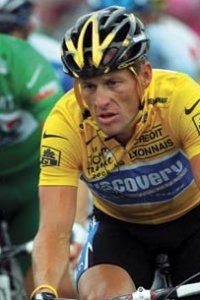 One cannot watch Lance Armstrong’s very public fall from grace—he has been stripped of all seven Tour de France victories, and has been barred from competitive cycling for life—without having brought to mind some words from Joyce: “They discovered to their vast discomfiture that their idol had feet of clay, after placing him upon a pedestal.”
One cannot watch Lance Armstrong’s very public fall from grace—he has been stripped of all seven Tour de France victories, and has been barred from competitive cycling for life—without having brought to mind some words from Joyce: “They discovered to their vast discomfiture that their idol had feet of clay, after placing him upon a pedestal.”
There’s no doubt that Armstrong was on a pedestal. Prowess as a cyclist made him an idol to thousands. That number exploded as Armstrong battled and beat testicular cancer. These were the legions that supported the Livestrong Foundation, which provides support to people with cancer. Now that Armstrong has been found to be guilty of doping, many fans and supporters feel cheated. Livestrong donors have asked for their money back. Legendary cycling commentator Phil Liggett says he feels like a fool for having defended Armstrong so vigorously, for so long.
Armstrong’s sponsors have all dropped him. Nike, Trek Bicycles, Anheuser-Busch, 24 Hour Fitness, Oakley, and Honey Stinger have all severed ties with the racer, although not necessarily with the Livestrong Foundation.
The near-universal repudiation of Armstrong is interesting from a psychological perspective. What’s going on here? Why did people—many of whom have no intention of ever purchasing a bike, much less riding one—identify so strongly with Armstrong? Why are they so hurt by this news now?
Understanding Your Customers: Archetypal Images
Lance Armstrong was an appealing figure to many because he embodied one of the most powerful archetypal images: the Hero. He is now reviled, and represents a new, equally powerful archetype: the Traitor.
When we talk about archetypal images, we’re referring to a type of persona or character that comes up time and time again through history. As we cycle through the ages, humanity repeats itself. Some people do majestic, awe-inspiring things – great feats that are remembered and celebrated. These people become the heroes. Other people do pretty terrible things, lying and deceiving to achieve their own ends. These people become traitors.
We talk about our heroes. We talk about our traitors. We talk about them so much, given time, that the stories we tell are more important than any objective facts may be. The symbolism of the story transcends the substance of it. So many different stories of heroism and achievement get woven together, resulting in one collective image almost everyone can identify with.
These tales are used to educate and guide us: if a person is held up as heroic, we believe they’re admirable, and that we should try to emulate the qualities or characteristics of that individual. If another person is held up as traitorous, we believe they’re a bad guide to making positive life choices. We try to avoid doing what traitors do. Even today, you won’t find lots of young mothers naming their babies Benedict Arnold.
Lance Armstrong very visibly, and abruptly, shifted from being a Hero to being a Traitor. This created a tremendous amount of internal conflict within those individuals who identified with him, trying to emulate his behavior, attitude, and near magical ability to survive cancer.
People who used Armstrong as inspiration to hang in there and keep fighting, no matter what, actually expended energy, effort, and resources to hang in there and keep fighting. They paid a personal cost for their commitments. When they learn that they’ve paid this cost under a fraudulent pretense, the internal conflict created becomes very intense. No one likes feeling duped or betrayed.
Being able to shift Armstrong from the Hero category to the Traitor category resolves some of that internal tension for the consumer. The greater the feeling of betrayal, the more vehement and profound the distancing behavior will be.
Smart brands, including Nike, have acknowledged this tension in issuing their statements about Armstrong. It’s a way to demonstrate that the brand’s feelings and values are in alignment with those their best customers are experiencing. Lance may have crashed his career, but with smart, strategic understanding of who their customers are on a humanistic level, brands like Nike and Oakley will move on from this incident with no damage done.
